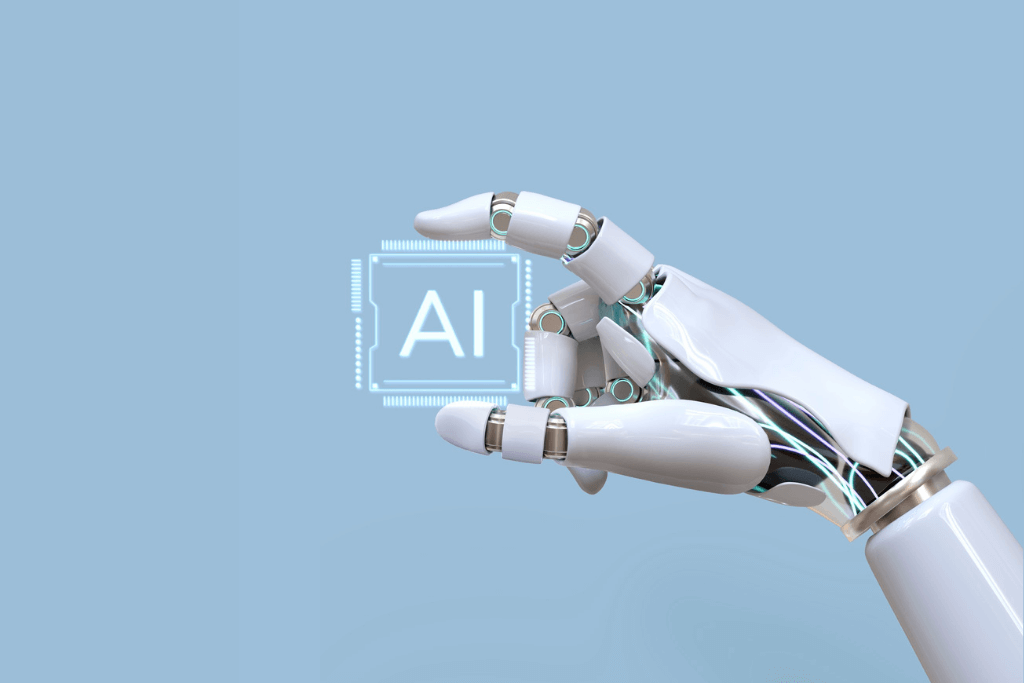Alternative Energy Methods

Alternative Energy Methods
Most of the energy currently produced comes from fossil fuels and causes many environmental problems. However, thanks to alternative energy sources, a cleaner and more sustainable energy production can be achieved. These methods can be more environmentally friendly and more economical in the long run than traditional sources.
It is possible to fight with less greenhouse gas emissions and less pollution thanks to alternative energy sources such as solar energy, wind energy, geothermal energy, biomass energy and marine energy. In addition, these methods provide many job opportunities and can contribute to the national economy.
These alternative energy methods can be used in both homes and businesses, as well as in large-scale power generation facilities such as wind farms or geothermal power plants. In addition, the use of these methods can contribute to falling energy prices as fossil fuels decline.
- Solar energy: It can be used in homes through solar panels.
- Wind energy: It can be used to generate electricity through wind turbines.
- Geothermal energy: It can be used in homes through heat pumps.
- Biomass energy: With the combustion of biomass fuels, heating and electricity production can be achieved.
- Marine energy: It can be provided by wind, tidal or wave movements.
Solar energy
Solar energy is one of the most popular energy sources in the world. Solar is an unlimited and free resource and very easy to use at home. Solar energy can be used to generate electricity in homes through solar panels. These panels can be easily installed on roofs, walls or open areas.
Solar energy is low cost and more environmentally friendly than other energy sources. Solar panels use the sun's rays to convert them into solar energy, which powers the electronics in the home. The amount of electricity saved by using solar energy can be quite high.
| Advantages | Disadvantages |
|---|---|
|
- Environmentally friendly - Unlimited resources - Low cost - Easy setup |
- High investment cost - Its effect is reduced in windy or rainy weather - Dependency on assembly spaces - Production quantity may vary |
Solar energy is an important resource, especially for those looking for an environmentally friendly option. Solar is an unlimited and free resource and easy to use in homes. However, it also has disadvantages such as high investment cost, variability of production amount and dependency on assembly areas.
Wind power
Wind energy is one of the most widely used alternative energy sources today. It uses kinetic energy to generate electricity and is provided by wind turbines. This turbine converts wind energy into electricity with blades placed on high-rise buildings or open fields.
Wind turbines come in two types: horizontal axis wind turbines and vertical axis wind turbines. Horizontal axis wind turbines are the most common type and the blades rotate along the centerline of the turbine. Vertical axis wind turbines are positioned closer to the ground and their blades vertical. Wind turbines are often located in what are called wind farms and work in conjunction with many turbines. These farms are often connected to the electricity grid, providing power for thousands of households.
Wind energy is very popular because it is clean, sustainable and renewable. Continuous efforts are made to increase the use of wind energy, energy consumption in transportation, industry and homes.
Wind Turbines
Wind energy has become very popular today as a sustainable energy source. Wind turbines are tools used to take advantage of this energy source. Thanks to their wings, they convert the kinetic energy of the wind into electricity. Wind turbines are placed on tall buildings or open fields.
These turbines are high performing machines and generally have high efficiency ratings. However, wind turbines are less used due to their high cost. Wind turbines generally have two basic types: horizontal axis wind turbines and vertical axis wind turbines.
Horizontal axis wind turbines are the most widely used type. The blades rotate along the centerline of the turbine. Such turbines have high efficiency rates and can operate over a wide range of wind speeds. Horizontal axis wind turbines can be combined to generate more power.
Vertical axis wind turbines are machines with blades positioned vertically along the centerline of the turbine. Because they are closer to the ground, they can even operate at lower wind speeds. Such turbines are environmentally friendly as they are quieter and less visible than horizontal axis turbines. However, vertical axis wind turbines may have lower efficiency rates.
Wind energy has become very important today because it is environmentally friendly and accepted as a sustainable energy source. Wind turbines are a very important tool to take advantage of this energy source. Horizontal axis and vertical axis wind turbines are the most common types of wind turbines used to generate electrical power.
Horizontal Axis Wind Turbines
Horizontal axis wind turbines are the most widely used type to generate wind power. In such turbines, the blades rotate horizontally around the center of the rotor and convert kinetic energy into mechanical energy. The blades of horizontal axis wind turbines generally have a thin profile and aerodynamic structure.
Such wind turbines operate with more than one blade and often have three or five blades. The angle between the blades can affect the performance of wind turbines. The blade angle can change according to the wind speed and direction, so that the turbine can reach maximum performance in different wind conditions.
The production costs of horizontal axis wind turbines are lower than other types and therefore they are widely preferred. However, it should be taken into account that their performance may be low at low wind speeds.
Vertical Axis Wind Turbines
Vertical axis wind turbines are an alternative energy method that stands out with their blades being positioned closer to the ground. This type of wind turbine is a technology suitable for use especially in urban areas without the need for an increase in height.
Unlike conventional horizontal axis wind turbines, vertical axis wind turbines position the blades vertically. For this reason, they offer a different design with their elbow-like structure.
Such wind turbines require lower acceleration compared to systems with a horizontal axis. Advantages of vertical axis wind turbines include ease of maintenance, quieter operation and the potential to be unaffected by changes in wind direction.
| Advantages | Disadvantages |
|---|---|
| - Ease of maintenance | - Lower productivity |
| - Quieter operation | - Requires lower acceleration |
| - Potential to be unaffected by changes in wind direction | - Cost of vertical axis wind turbines |
As a result, vertical axis wind turbines are a different alternative energy source than horizontal axis wind turbines. It is a technology suitable to be used especially to meet the energy needs of urban areas. However, the lower efficiency and high cost of vertical axis wind turbines are among the disadvantages.
Wind Energy Farms
Wind farms are built in areas with strong wind sources. These farms can often have tens or even hundreds of wind turbines. Wind turbines convert wind energy into mechanical energy. This energy is converted into electrical energy by means of a generator. Wind farms are used to meet the electricity needs of cities, and many countries are trying to reduce fossil fuels in electricity generation using this method.
Wind farms are often spread over a large area, which is an important factor in land use. Some countries choose to use idle land when establishing these farms, while other countries focus on generating electricity more efficiently using part of their farmland.
However, wind farms also face some criticism. Some people think that these farms destroy the natural environment and cause visual pollution. In addition, there are environmental problems such as the use of fossil fuels and recycling problems in the production of turbines used to generate wind energy. However, wind farms are still considered one of the most environmentally friendly options among energy sources and are sure to play an important role in future energy production.
Geothermal energy
Geothermal energy is one of the natural energy sources in the world and takes advantage of thermal energy underground. The use of this energy is also provided in homes by means of heat pumps. The largest source of geothermal energy is hot magma sources below the earth's surface. The steam obtained from these sources is directed to the wells that will allow the water to rise to the surface.
Geothermal energy is a renewable energy source and can be used to replace fossil fuels. Also, geothermal energy sources are an excellent option for a local and sustainable energy production. The use of these resources provides an environmentally friendly energy production by reducing carbon emissions.
The use of geothermal energy is becoming widespread in homes with the use of heat pumps. Heat pumps use geothermal energy to generate the energy needed to heat and cool homes. At the same time, these systems are more energy efficient than traditional energy sources and provide homeowners with long-term cost savings.
As a result, geothermal energy plays an important role for a sustainable energy production and is becoming more common with the use of heat pumps in more homes. This sustainable energy source helps to make a greener world possible by reducing environmental pollution.
Biomass Energy
Biomass energy is a frequently used alternative energy source today. This energy, obtained from biomass fuels, is used both for heating in homes and for electricity generation. Biomass fuels are usually derived from biological sources such as waste wood, agricultural waste, vegetation and some animal waste.
Biomass fuels are an alternative energy source that can replace fossil fuels because they are derived from renewable sources. Biomass energy can be obtained with technologies such as liquid biofuel, biogas and biomass turbines.
In addition, biomass energy also helps to dispose of waste. In bioenergy plants, electricity is produced by burning biomass fuels and at the same time, non-recyclable wastes are disposed of. This is a huge benefit for the environment.
However, the use of biomass energy also brings some problems. Biomass Fuel production can have serious ecological effects by disrupting the natural balance of forests. In addition, land used for biomass energy production can replace land that can be used for food production. Therefore, the use of biomass energy should be handled with an approach that considers sustainability.
Biomass Fuels
Biomass energy emerges as an environmentally friendly energy source and biomass fuels are of great importance in obtaining this energy. Biomass fuels may include waste wood, plants, agricultural waste and some animal waste. The properties of these fuels may vary depending on the type of biomass.
Waste wood is wood residues from deforestation and forest fires. During the combustion of these residues, no harmful gas is released into the atmosphere and the carbon footprint is reduced. Plants are powered by solar energy and are an important part of biomass. Agricultural wastes are plant residues left over after harvest and are used as fuel. Animal waste includes organic waste such as animal manure and is used during the production of biomass fuel.
Biomass fuels are an environmentally friendly and sustainable energy source. These fuels can be used for electricity generation, heating and industrial purposes. Unlike other energy sources, biomass energy is obtained by a natural cycle, not by thermodynamic cycles. Therefore, biomass energy is a more environmentally friendly energy source.
- Waste wood
- Plants
- Agricultural waste
- Animal waste
Biomass fuels are a renewable energy source and one of the sources with the greatest potential to meet the world's energy needs. The carbon footprint formed during their production is low and reduces greenhouse gas emissions.
Bioenergy Plants
Biomass energy is one of the most popular among renewable energy sources. This energy source is obtained by using biomass fuels and can be used for many purposes such as heating and electricity generation.
Bioenergy plants produce electricity by burning these biomass fuels. These power plants also assist in the disposal of waste. Biomass fuels can be produced from waste wood, animal waste, agricultural waste, plants and some industrial wastes.
While bioenergy plants generate energy by burning these wastes, they also help to reduce the harmful effects of wastes on the environment. These power plants can be connected to the electricity grid or can be used for small-scale projects.
Bioenergy plants are environmentally friendly as they are a renewable energy source and also reduce dependency on energy sources. Therefore, the use of these power plants has gained popularity in recent years.
Marine Energy
Marine energy is a sustainable method of energy production using natural resources. In oceans or other large bodies of water, energy is provided by the action of the wind, tide, or wave. When this energy source is used, the use of fossil fuels can be reduced and an important step can be taken for an environmentally friendly future.
- Wind power: Large-scale wind turbines can be located on platforms over the ocean. These turbines generate electricity using the winds from the oceans. Both small-scale and large-scale wind turbines can be installed on small-sized platforms on the shoreline or offshore.
- Tidal energy: Tidal energy obtains energy by using tidal movements in the seas. This energy is especially concentrated in coastal areas close to estuaries. Tidal energy can also be obtained in an environmentally sustainable way using a mare energy style sea breeze system.
- Wave energy: Every wave is a source of energy. Researches to produce energy from wave movements in the seas show that this energy source can be used. Wave energy, when combined with tidal energy, can help provide energy sources even during the longest hours.
Marine energy is one of the renewable energy sources. This energy source, unlike other energy sources, reduces environmental impacts and can be used continuously. It can be used in both small-scale and large-scale projects and contributes to the sustainability of our future.








